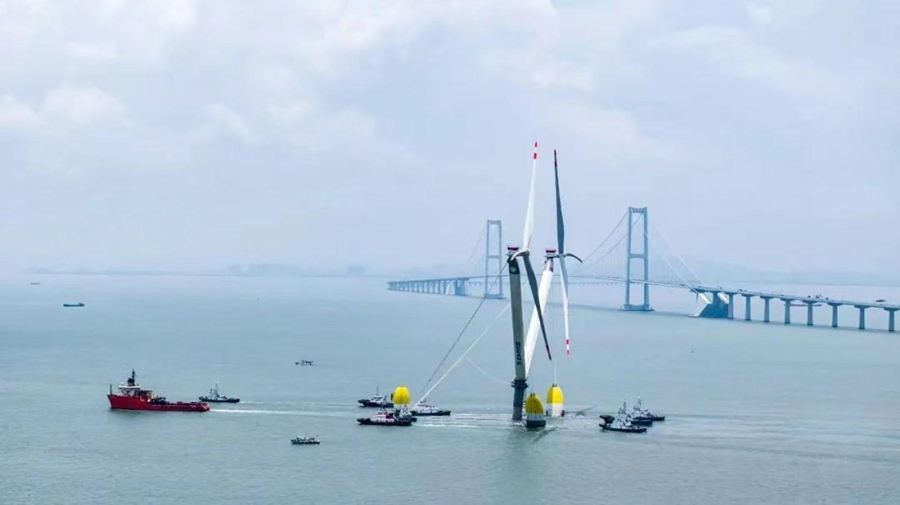Send this article to a friend:
August
14
2024
Send this article to a friend: August |
Giant dual-rotor wind turbine takes to the seas
When we first reported on Mingyang’s OceanX, it was already causing a bit of a stir thanks to its dual-rotor design. Now, it has launched from its building site at Guangzhou, China and is heading towards the Qingzhou IV Offshore Wind Farm in Yangjiang, Gangdong to showcase its remarkable technology. OceanX is no lightweight even for an offshore wind farm installation. It consists of two MySE16.6(T) wind turbines with blade diameters of 597 ft (182 m) and the entire floating platform weighing in at 15,000 tonnes that can anchor in waters over 115 ft (35 m) deep.  It will take three days to move OceanX to its site
Built by Mingyang Smart Energy and built by a partnership between Huangpu Wenchong Shipbuilding Company, and China State Shipbuilding Corp, its double rotors are designed to generate over 16 MW of power. It can turn in the wind automatically so it always faces downwind from the breeze, which can be substantial. According to the company, it's capable of withstanding wind of up to 161 mph (260 km/h), which is in Category 5 hurricane or typhoon conditions. Its single-point mooring and downwind posture allows the rotors to bend without danger of striking the supporting structure, which is designed to allow it to survive such harsh winds and heavy seas. Some reports have claimed that the OceanX can even generate power in a hurricane, but that is open to question. The official specifications say its rated wind speed is about 22 mph (36 km/h), which is scarcely in the hurricane range. In addition, the formulas regarding the characteristics of wind turbines show that at high speeds any turbine trying to generate power instead of simply feathering to survive would very quickly rip itself to shreds. Perhaps there has been a mix up in translation or Minyang's marketing department is being a bit optimistic. Source: Mingyang
|
Send this article to a friend:
 |
 |
 |